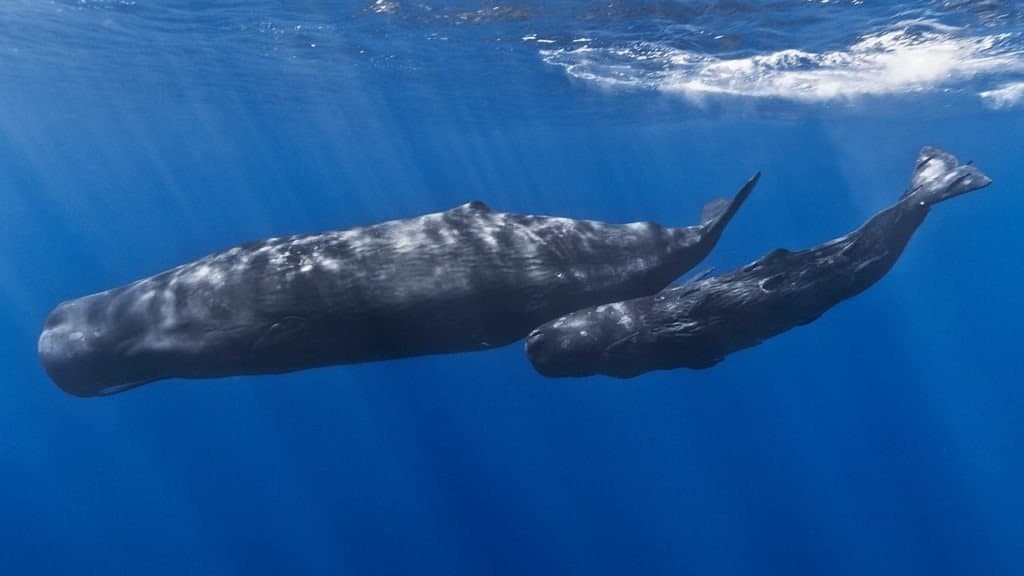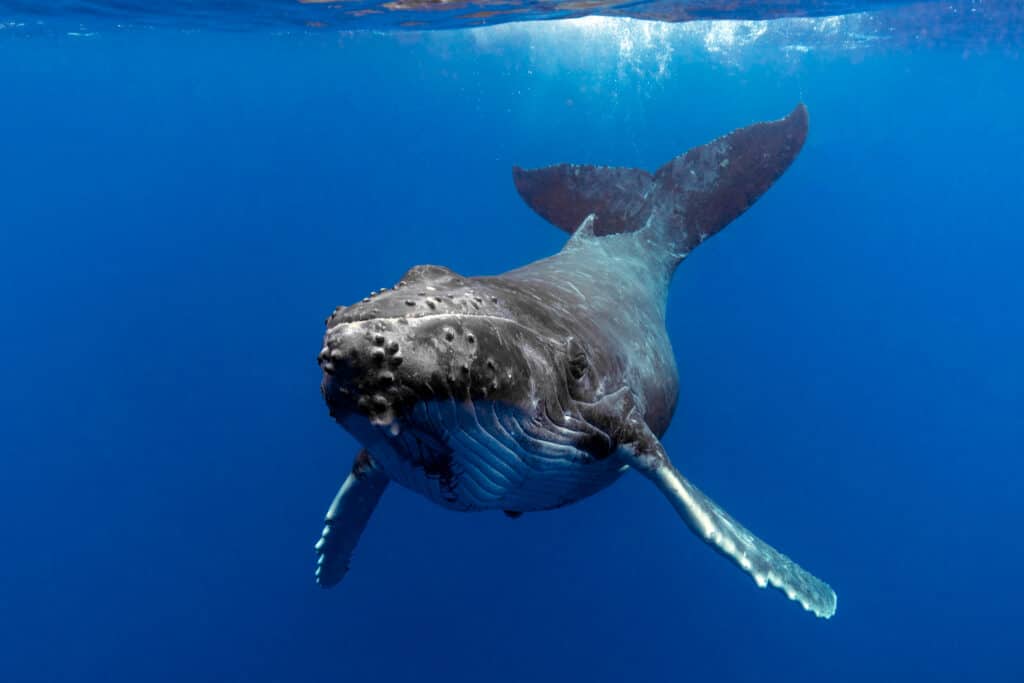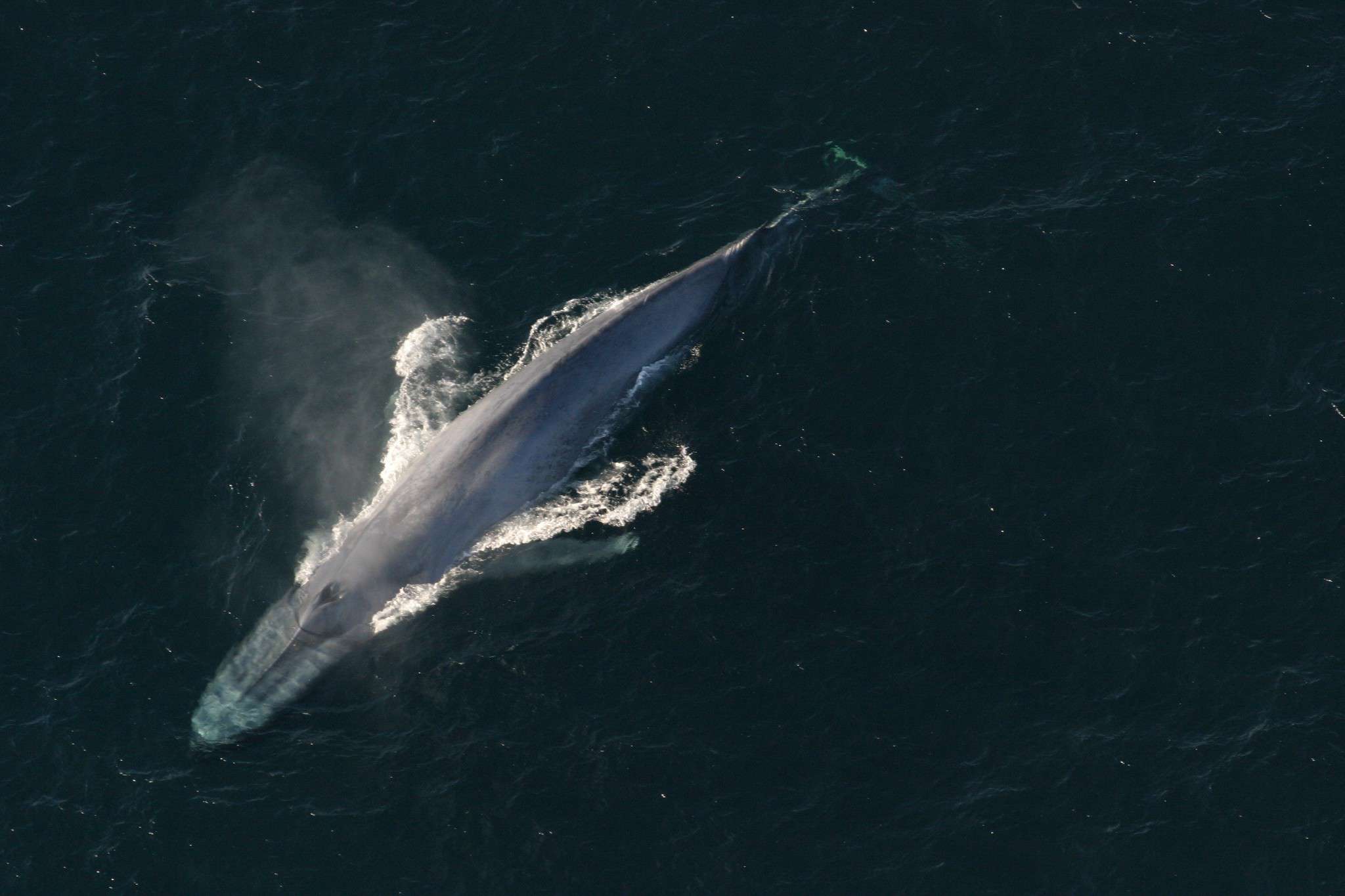Sperm whales have one of the largest global distributions of any marine mammal. They are also the largest species of toothed whales. These massive whales occur in every deep ocean from the Arctic and Antarctic to the equator. They derived their name from spermaceti, the waxy substance on their heads. Sperm whales use the spermaceti to focus on sound. However, it is also the reason humans hunt them. This waxy substance is used in lubricants, oil lamps, and candles. These whales can grow quite large, but to help you comprehend just how big they get, below is a sperm whale size comparison.
Types of Sperm Whales and Their Sizes
There are three types of sperm whales:
- Sperm whale
- Pygmy sperm whale
- Dwarf sperm whale
The sperm whale belongs to the Physeter genus, while the pygmy and dwarf sperm whales are members of the Kogia genus. These whales primarily inhabit tropical and temperate waters. Additionally, they share specific characteristics, like simple teeth arrangements, the location of the blowhole, and other behavioral and physical features. However, there is one major factor that separates them, and that is their size.
Sperm whales measure between 49 to 60 feet in length and weigh approximately 35 to 45 tons when fully grown. But pygmy sperm whales are much smaller. In fact, they are barely bigger than dolphins. For example, these whales measure around 11 feet long and weigh about 880 pounds when fully matured. Lastly, the dwarf sperm whale grows between 6 feet 7 inches and 8 feet 10 inches and weighs 300 to 600 pounds.

Sperm whales measure between 49 to 60 feet in length and weigh approximately 35 to 45 tons when fully grown.
Sperm Whale Vs. Human Size Comparison
The average size of a United States adult is 180 pounds. The average height varies between 5 feet 4 inches and 5 feet 9 inches. Therefore, when comparing the size of a sperm whale against a human, we are basically microscopic because they weigh a whopping 35 to 45 tons and measure between 49 to 60 feet long.

Sperm Whale Size Comparison to an Orca
Orcas might seem intimidating, but they are much smaller than sperm whales. Killer whales weigh approximately 6.6 tons and grow between 23 to 32 feet long. As sperm whales can weigh up to 45 tons and can measure almost 60 feet long, there really is no comparison.

Killer whales weigh approximately 6.6 tons and grow between 23 to 32 feet long.
©Monika Wieland Shields/Shutterstock.com
Sperm Whale Size Comparison to a Humpback
While the sperm and humpback whales are similar in length, the latter weigh much more. For example, humpback whales measure between 48 and 62 feet and weigh 40 to 100 tons, while sperm whales can grow to 60 feet long and can weigh up to 45 tons.

Humpback whales measure between 48 and 62 feet and weigh 40 to 100 tons, while sperm whales can grow to 60 feet long and can weigh up to 45 tons.
©Craig Lambert Photography/Shutterstock.com
Sperm Whale Size Comparison to a Blue Whale
While both these whales are incredibly big, nothing is bigger than the blue whale, which is the largest species on Earth. Blue whales are almost double the size of a sperm whale and nearly triple the weight. For example, the largest blue whale on record measured 98 feet long and weighed a whopping 173 tons.

While both these whales are incredibly big, nothing is bigger than the blue whale, which is the largest species on Earth.
©NOAA Photo Library / CC BY 2.0, Flickr – Original / License
Where Do Sperm Whales Live?
Sperm whales have the ability to dive to insane depths, up to 3280 feet, and remain at these depths for up to two hours. Both of these abilities assist these whales in finding prey. Therefore, sperm whales prefer to inhabit deep waters, and it is uncommon to see them along the coast, except in underwater canyons as you approach the shore or deep trenches. These massive whales have the widest distribution on the planet, occurring in any deep ocean from the Arctics to the equator.
Are Sperm Whales Dangerous?
Luckily, there are no known cases of sperm whales attacking humans, as they are docile and non-aggressive. However, they have a curious nature and often approach boats. But, while they are calm animals, it’s essential to remember they are big, powerful, wild animals and should be treated with respect and caution.
Are Sperm Whales Endangered?
The demise of the sperm whale population in the 1800s was thanks to a lucrative whaling industry. Before whaling, there were over a million sperm whales in the oceans. However, their numbers quickly dropped to approximately 300,000. As a result, the Endangered Species Act listed these whales as Endangered. Sperm whales have many threats, like climate change, pollution, and ship strikes.
The photo featured at the top of this post is © Martin Prochazkacz/Shutterstock.com
Thank you for reading! Have some feedback for us? Contact the AZ Animals editorial team.







